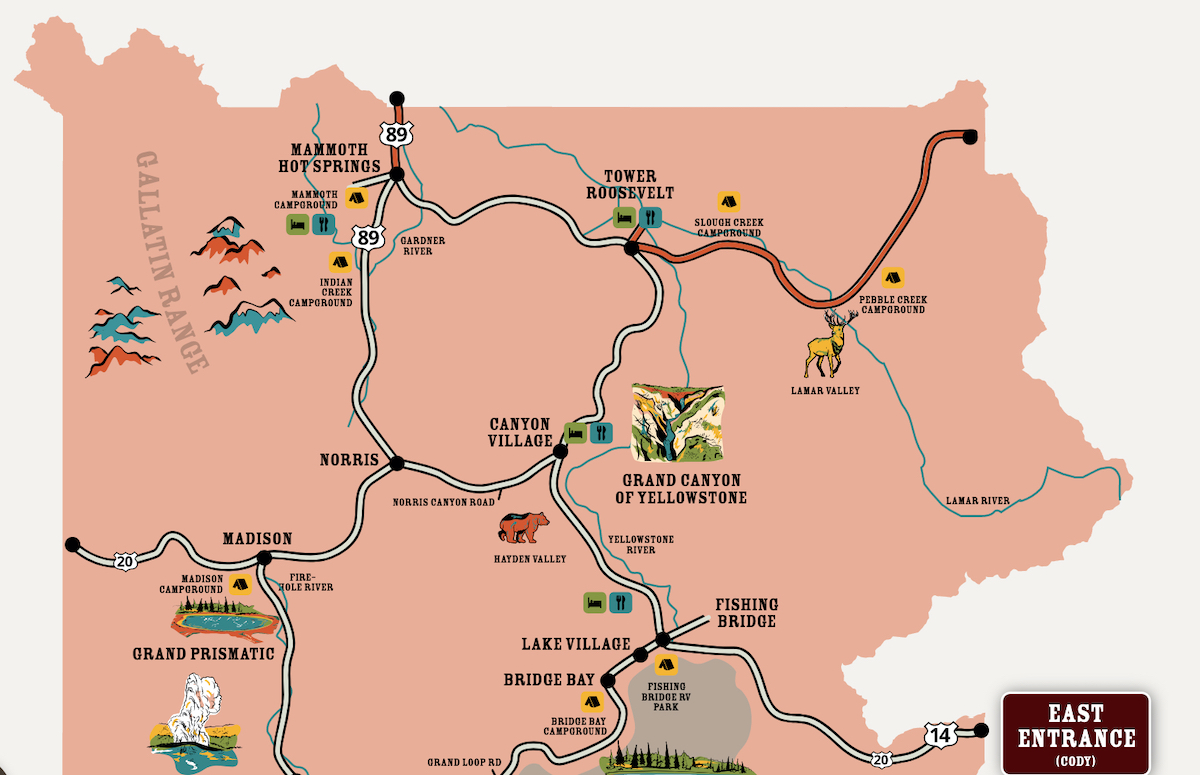“The Department of the Interior is working very hard to address the climate crisis, because that isn’t going away,” Haaland said. “So, adaptation is definitely one of those … things that Cam and the team will take into consideration as you’re looking at ways to rebuild.”
Engineers are looking at realigning roads that the rivers ripped asunder, Sholly said, “so we don’t have another flood in two years that takes out some other sections.
“Any investment that we make, has to be looked at through the lens of what’s in the future, whether it’s sea level rise, whether it’s what we just experienced here, whether it’s devastating fires that we’re seeing,” he said.
Visitation down 30%-40%
Yellowstone evacuated visitors June 13 after rain and snowmelt drove rivers out of their banks, damaging roads along the Gardner and Lamar Rivers and Slough Creek.
“Cam’s team’s preemptive road closures — even before the flooding began — I feel very strongly saved some lives,” Haaland said.
Highways are key to the general Yellowstone experience, with 97 percent of visitors never getting more than a half a mile from them, Sholly said.
Park officials opened the southern part of Yellowstone June 22 with visitor limits. They suspended those restrictions when they opened the park’s northern loop July 2. With two of five entrances — from Gardiner and Cooke City — mostly closed, visitation is down 30 percent-40 percent from pre-pandemic levels, Sholly said.
“They’re getting busier,” Sholly said of businesses inside and around the park. “I don’t know if it will get to normal.”
There’s usually a lag between when Yellowstone announces a reopening and visitors return in substantial numbers, he said, so tourism could improve.

Canyon roads from Mammoth to Gardiner, Montana in the northwest and to Cooke City, Montana, in the northeast, will take three to five years to reconstruct permanently, officials believe. (screengrab/Visit Wyoming)
A park entry reservation system won’t be ready for use this summer season, he said, but limits could be imposed.
Park roads are 93 percent open, and Yellowstone has $60 million in emergency funds to re-establish the temporary corridors between the two Montana communities and Mammoth this fall.
“We’re going to do just that before winter,” Sholly said, with two lanes to Gardiner “paved sometime around October, maybe sooner.”
The park was able to assess damages “only in the last few weeks,” he said.
“If you look at the total amount of actual pavement — it is less than a couple of miles,” that was wiped out, he said. But rivers inflicted the damage “in some of the most critical and hard-to-rebuild areas.”
Officials expect to award contracts this week to begin temporary fixes at four or five areas on the northeast corridor to Cooke City. Funding for the permanent restoration will go through the congressional appropriation process, Sholly said.
Yellowstone spans 2.2 million acres and roads cover 1,750 of them, Sholly said. Travelers are welcome to come to Yellowstone without their vehicles, he said.
“We’re allowing visitors to come into the park although they can’t drive, they can bike, hike, they can fish both from Gardiner and from Cooke City,” he said.
Haaland said she experienced the park’s lure the first time she saw Old Faithful erupt.
“I cried through the entire thing, because that’s what nature does sometimes,” she said. “It humbles us and makes us realize how important special places are.”


 Support Essential Coverage of Essential Places
Support Essential Coverage of Essential Places




Add comment